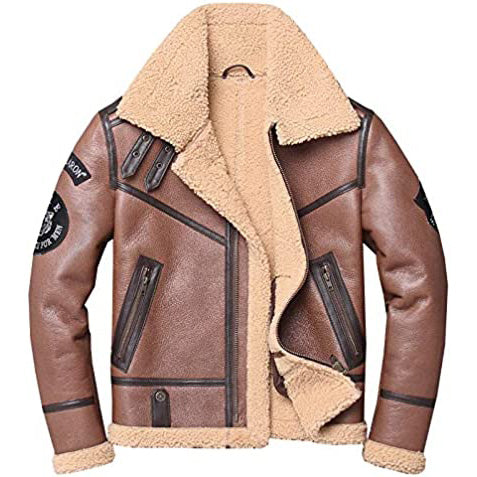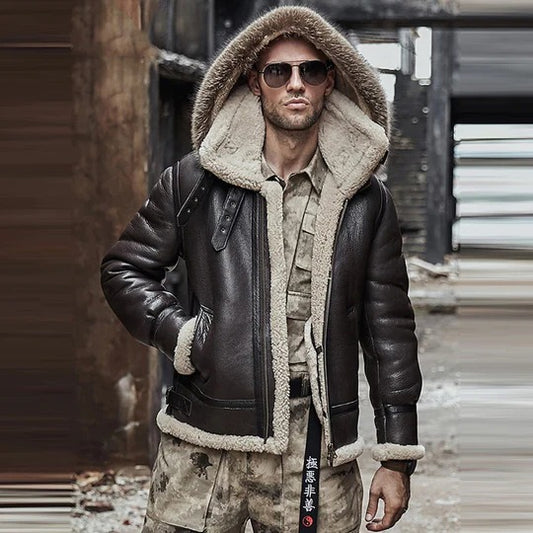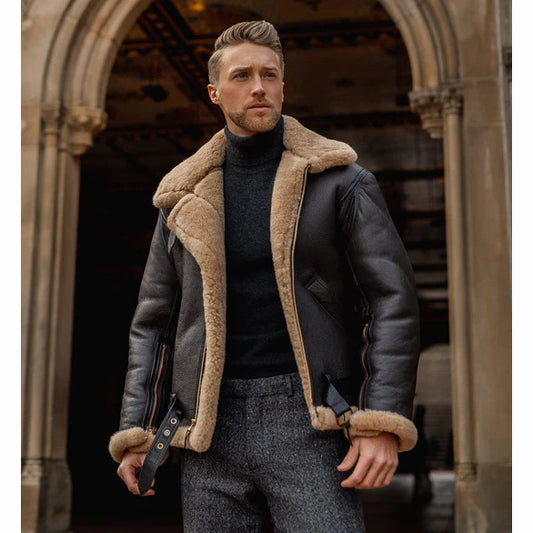What is Split Leather?
Leather is a classic, durable material that has been used for centuries to create various goods, from fashion items like jackets and bags to functional products like upholstery and footwear. However, not all leather is the same. One particular type that often raises questions is split leather.
In this article, we'll dive deep into what split leather is, how it compares to other types of leather, its uses, pros and cons, and much more.
Table of Contents
- What is Leather?
- What is Split Leather?
- How is Split Leather Made?
- Split Leather vs. Full-Grain Leather
- Uses of Split Leather
- Advantages of Split Leather
- Disadvantages of Split Leather
- How to Care for Split Leather?
- FAQs About Split Leather
- Conclusion
1. What is Leather?
Leather is a natural material made from the hide of animals, typically cows. There are various processes for preparing and finishing leather, resulting in different types and grades, such as full-grain leather, top-grain leather, and split leather.
When leather is processed, the animal's hide is often too thick to be used in its entirety. This thickness is reduced by splitting it into layers, which is how split leather comes into existence. Full-grain leather is the top layer, while split leather is a lower layer of the hide.
2. What is Split Leather?
Split leather is a type of leather that comes from the bottom layer of the animal hide after it has been split from the top-grain layer. Unlike full-grain leather, which contains the strongest and most durable part of the hide, split leather is softer and more pliable. It doesn't have the same level of durability but can still serve many purposes. It's commonly used in lower-priced leather goods, like some furniture, work gloves, and bags.
Split leather is often finished with a protective coating or an embossed texture to give it the appearance of higher-quality leather, such as top-grain or full-grain leather.
3. How is Split Leather Made?
The process of making split leather involves several steps:
-
Hide Splitting: The raw animal hide is initially very thick, so it's split into two or more layers. The top layer is used for full-grain leather, while the bottom layer becomes split leather.
-
Tanning: The split hide is tanned using chemicals, a process that preserves the leather and gives it the desired texture.
-
Finishing: Because split leather lacks the natural grain found in full-grain leather, it often undergoes additional treatments to improve its appearance. These treatments can include embossing a grain pattern or applying a pigment layer to mimic the look of top-grain leather.
-
Coating: A layer of polyurethane or another protective finish is often applied to enhance durability and give the leather a uniform appearance.
4. Split Leather vs. Full-Grain Leather
| Feature | Split Leather | Full-Grain Leather |
|---|---|---|
| Layer of Hide | Bottom layer | Top layer |
| Durability | Less durable than full-grain leather | Extremely durable and long-lasting |
| Appearance | Can be embossed to look like top-grain | Natural grain, unique markings |
| Softness | Softer and more flexible | Firm and rugged, becomes softer over time |
| Price | More affordable | More expensive due to higher quality |
| Common Uses | Furniture, gloves, budget bags | High-end leather goods, jackets, footwear |
Full-grain leather retains the top layer of the hide, which includes all the natural grain and imperfections, making it more durable and desirable for high-end products like leather jackets from brands like Jackets Kingdom.
Pros and Cons of Split Leather
Pros:
- Affordable
- Soft and flexible
- Widely available
- Customizable appearance
Cons:
- Less durable
- More prone to damage
- Lacks natural grain and beauty
- Less breathable
5. Uses of Split Leather
Split leather is versatile and has many uses across different industries. Some common applications include:
- Furniture Upholstery: Due to its affordability, split leather is often used in budget-friendly furniture.
- Work Gloves: It's softer, making it ideal for gloves that require flexibility.
- Handbags & Wallets: Split leather can mimic the look of top-grain leather while being more cost-effective.
- Footwear: Some shoes, especially work boots, use split leather for its balance of comfort and affordability.
- Automotive Upholstery: In lower-end car models, split leather is sometimes used for seat covers.
6. Advantages of Split Leather
Split leather offers several advantages:
- Affordability: Split leather is much more affordable than full-grain leather, making it a budget-friendly option.
- Soft Texture: It has a soft and flexible feel, which some people prefer over the firmness of full-grain leather.
- Wide Availability: Since it's a byproduct of the leather-splitting process, it's more widely available than top layers of the hide.
- Customization: Split leather can be treated, dyed, and embossed to resemble higher-quality leathers, offering a variety of style options.
7. Disadvantages of Split Leather
However, split leather also comes with some drawbacks:
- Lower Durability: Split leather is not as tough as full-grain or top-grain leather, and it is more prone to wear and tear.
- Less Breathability: The finishing layers applied to split leather can reduce its natural breathability, making it less comfortable for clothing.
- Susceptible to Damage: It is more susceptible to scuffing, scratching, and other forms of damage compared to top-grain leather.
- Artificial Appearance: Even though it can be treated to look like higher-quality leather, split leather lacks the natural beauty of full-grain leather.
8. How to Care for Split Leather?
Taking care of split leather is essential to prolong its life and maintain its appearance. Here are some tips:
- Keep it Clean: Regularly wipe down split leather with a damp cloth to remove dust and dirt.
- Avoid Direct Sunlight: Prolonged exposure to sunlight can cause the leather to fade or crack.
- Conditioning: Use a leather conditioner occasionally to keep it soft and moisturized.
- Avoid Excessive Moisture: Split leather is less water-resistant than full-grain leather, so it's best to keep it dry.
9. FAQs About Split Leather
Q: Is split leather real leather?
A: Yes, split leather is real leather, but it comes from the lower layers of the animal hide and lacks the natural grain of full-grain leather.
Q: Can split leather be used for jackets?
A: While it is less durable than full-grain leather, split leather can be used for budget-friendly leather jackets. However, it may not age as well.
Q: Is split leather good for furniture?
A: Split leather is often used for affordable furniture. It's softer but less durable than full-grain leather, so it may show wear over time.
Q: How does split leather compare to top-grain leather?
A: Split leather is a lower layer of the hide and is less durable than top-grain leather, which retains more of the hide's strength and texture.
Q: Can split leather be waterproofed?
A: Split leather is less water-resistant than full-grain leather, but applying a water-resistant treatment can help protect it from moisture.
10. Conclusion
In conclusion, split leather is a cost-effective and versatile material that serves a range of purposes, from furniture to fashion. While it may not have the same durability and appearance as full-grain leather, its affordability and softness make it an excellent choice for certain products. Whether you’re looking for furniture, gloves, or bags, split leather can be a practical option, especially when you know how to care for it properly.




